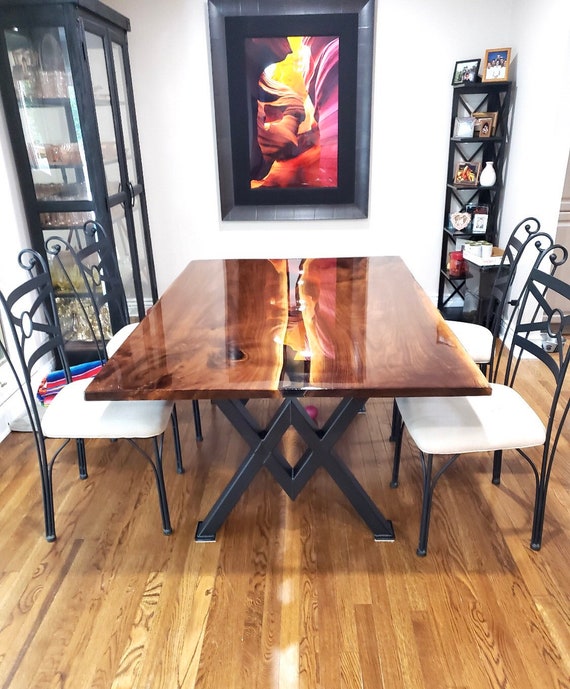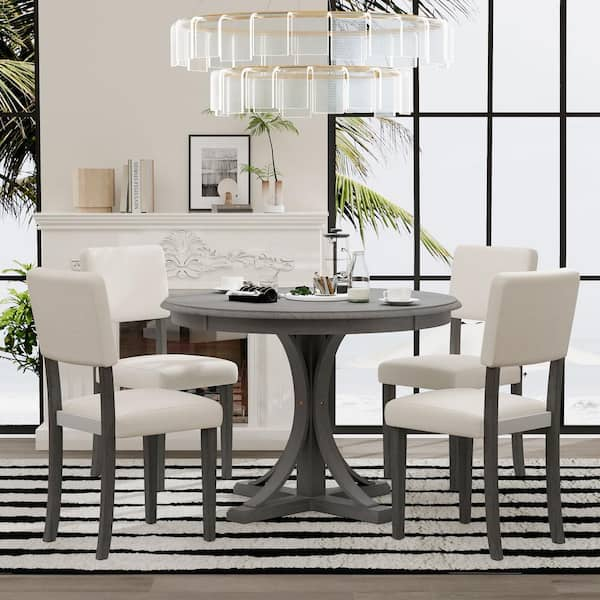The Impact of Dining Room Table Legs on Your Table's Overall Design
Wiki Article
From Conventional to Modern: Find the Ideal Dining-room Table Legs for Your Style
While classic designs such as cabriole and transformed legs evoke a sense of classic sophistication, contemporary designs like hairpin and geometric choices provide an opportunity for striking aesthetic interest. As you take into consideration these components, the concern remains: exactly how can you flawlessly integrate these diverse leg designs to create an unified eating experience?Comprehending Table Leg Styles
The range of eating space table leg designs can considerably affect both the aesthetics and performance of the area. Each leg style contributes distinct sensible features and aesthetic aspects, providing to diverse style choices and usage needs. Comprehending these designs is crucial for choosing the appropriate table that aligns with your general indoor design vision.For example, tapered legs provide a tidy, timeless look that can boost a space's sophistication, while pedestal bases provide stability and make best use of legroom, making them perfect for smaller sized rooms. Barrette legs, a hallmark of mid-century modern style, present a commercial flair, enabling an airy, open feeling. Likewise, trestle legs evoke rustic appeal, giving robust support and a feeling of timelessness.
Furthermore, the selection of materials plays a substantial role. Wood legs can bring warmth and texture, whereas metal alternatives frequently communicate a streamlined, contemporary vibe. Inevitably, understanding table leg styles is crucial for creating a natural eating area that shows personal design while making sure usefulness and convenience. By attentively taking into consideration these components, you can improve both the functional and aesthetic charm of your dining area.
Conventional Table Leg Options
When picking dining-room table legs, conventional options commonly symbolize timeless style and craftsmanship. These layouts show an abundant heritage and a commitment to high quality, making them optimal for those who appreciate classic aesthetic appeals.Among one of the most renowned traditional leg designs is the cabriole leg, characterized by its stylish curved shape. This layout usually includes decorative makings and is most frequently discovered in Queen Anne and Chippendale furniture. An additional preferred choice is the turned leg, which boasts a series of smooth, rounded forms that give a classic appearance while preserving stability.
In addition, the straight leg, while straightforward, supplies a strong and basic structure that can mix seamlessly with a range of tabletop designs. For those drawn to ornate outlining, claw-and-ball feet legs stimulate a feeling of splendour and can function as a stunning centerpiece in any kind of dining space.
Finally, stand bases, although not strictly legs, offer an alternative standard option that enables for adequate legroom and can be perfectly sculpted. Each of these traditional leg styles adds to the general ambiance of a dining-room, marrying function with aesthetic appeal.

Modern Table Leg Designs
Modern table leg designs use a varied series of designs that stress tidy lines and cutting-edge materials. These layouts typically prioritize performance while functioning as striking prime focus within an eating room. Minimal aesthetic appeals prevail, with legs crafted from products such as metal, glass, and engineered timber, which contribute to a airy and modern feeling.One popular style is the barrette leg, characterized by its slim, tapered framework that provides security without overwhelming the tabletop (dining room table legs). This style is commonly discovered in mid-century modern-day furnishings and can easily match numerous table forms. An additional pattern is the use of geometric forms, where legs might tackle asymmetrical or angular forms, including visual interest and a touch of artistry

Mixing Designs for Special Areas
Often, house owners seek to develop distinct dining areas that mirror their individual style by blending numerous style aspects. This technique enables the incorporation of diverse visual appeals, leading to an unified yet distinct description setting. For example, pairing a rustic wood table with sleek, modern-day steel legs can produce an appealing comparison that elevates the area's total appeal.Additionally, incorporating vintage table legs with modern tabletops can evoke a sense of history while keeping a modern-day sensibility. Such combinations not only showcase specific taste yet additionally motivate imagination, allowing home owners to curate a space that really feels both individual and inviting.
Shade plays a crucial function in this blending procedure; choosing table legs that match or contrast with the existing color design can enhance aesthetic passion. For example, whitewashed legs can soften the boldness of a dark table surface, creating a balanced visual.
Tips for Picking the Right Legs
Choosing the right table legs is necessary for attaining both functionality and visual allure in your eating space. Begin by thinking about the total design of your space. Typical settings take advantage of legs that feature elaborate carvings or turned layouts, while modern areas might call for sleek, minimal styles.Next, evaluate the height and stability of the legs. dining room table legs. Typical table range between 28 to 30 inches in height, so ensure the legs enhance this measurement for convenience. Furthermore, durable products, such as hardwood or steel, can boost stability and durability
Assess the leg shape as well-- alternatives include right, tapered, or pedestal designs. Straight legs use a timeless look, while conical legs can add a touch of style. Pedestal bases supply enough legroom and are suitable for smaller spaces.
Verdict
In recap, selecting the optimal dining room table legs needs mindful factor to consider of both modern-day and conventional styles. Typical options such as cabriole and turned legs supply classic beauty, while contemporary designs like hairpin and geometric shapes supply a contemporary touch. By integrating leg style, elevation, and product this content with the general décor, a natural and welcoming atmosphere can be attained. Inevitably, the picked table legs need to show the preferred aesthetic, improving the eating experience within the room.The range of dining area table leg styles can significantly influence both the appearances and capability of the room. Eventually, recognizing table leg designs is essential for producing a cohesive dining area that reflects individual design while guaranteeing functionality and convenience.One of the most famous traditional leg styles is the cabriole leg, about his characterized by its stylish curved shape. Straight legs use a traditional look, while tapered legs can add a touch of elegance.In summary, choosing the optimal eating area table legs needs mindful factor to consider of both traditional and contemporary styles.
Report this wiki page